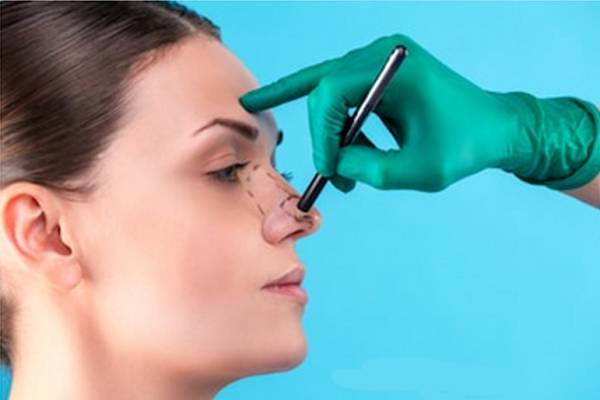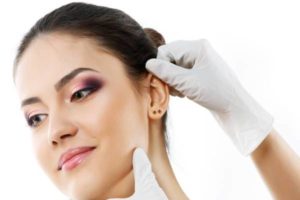Table of Contents
Rhinoplasty means nose beauty surgery. It is interesting to know that when world’s people became interested to perform this surgery on their face. After World War II that was 50 – 60 years ago, the first nose surgeries had been done in the world. The date of first rhinoplasty in Iran, refers to decade 40. To date, this surgery has had an increasing trend such that Iran has been known as one of the progressive and skillful countries in rhinoplasty.
Today, Iran hosts many health tourists from Asian and European countries. Of course, skill and ability of Iranian surgeries in advancing country for accepting international applicants shouldn’t be forgotten.
Beauty, increases self-confidence!
Naturally, all humans like beauty, and face is one of the main criterion of beauty in human’s body. We don’t consider the correctness or falsity of this assumption, and adduce opinion poll from rhinoplasty applicants.
What is the first answer to physicians’ question when they ask why do you want to perform rhinoplasty? In most cases, we hear the answer that person wants to be more beautiful. But, how is the diagnosis of nose beauty or ugliness? Should surgeon proceed to perform the surgery in every form and shape which you want?
In answering the first question, it should be told that good or bad form of nose can be defined according to compatibility of face members and their distance from each other. In answering to second question, it should be told that doctor considers appropriate form through investigating this distance and your face’s members. So, it’s better not to insist on a specific model for your nose and use your doctor’s instruction and consultation.
But, are all nose surgeries specified to beauty? Note that a part of nose surgeries are for treatment that in these surgeries, improving the function of nose is considered and totally include eliminating problems like inflation of inner tissues of nose, removing polyp, septal deviations, disease of head, face and sinus.
What methods is rhinoplasty performed with?
Rhinoplasty is an ambulatory surgery with general anesthesia that takes 1 – 2 hour. This surgery can be performed with the following techniques:
Open method: according to surgeon’s complete dominance over inner components of nose, surgeons usually like this method and it is utilized more for noses that need much reformation and restoration.
In open method, surgeon will raise skin completely and reach the inner tissue of nose through creating incisions around nasal fins or under the nose. Doctor’s extended view and dominance over nose inside, is an advantage of this method. But, scar and suture around the nose may be visible, and this visibility is a disadvantage of open method.
Closed method: this method is used for noses that their shapes are approximately good in appearance and aren’t so wide or lengthy and their structure can be changed and reformed easily. In this method, incisions will be done inside the nose and the wound symptom won’t be visible.
Individuals who are good candidate for rhinoplasty:
- Having healthy physical and mental status
- Girls over 16 and boys over 18 who have reached complete physical maturity
- Having appropriate weight to decrease the probability of respiratory complications while surgery is performing under general anesthesia
- If individual has background of heart disease, cardiologist’ permission for performing rhinoplasty is necessary
- Performing surgery is not recommended for patients who have type I and II diabetes, but if you have, you probably need more preparations that your doctor will provide you with them and also type of anesthesia will vary for you.
- No respiratory disease and disorders
- Hemophilia patients who don’t have coagulation factors, may have bleeding during surgery that will be dangerous for them. Therefore, presence of hematologist during surgery beside treatment team, will be an obligation.
- Patients who have HIV and hepatitis, due to probability of infection emergence in body and weak improvement, aren’t usually good candidates for rhinoplasty.
- No addiction to smoking and alcoholic drinks
Which doctor do you select for your nose surgery?
Don’t select every physician for your nose beauty. Doctors who have specialization in Ear, Nose and Throat or are cosmetician, are the best selection for performing rhinoplasty because of their familiarity with structure and tissue of nose and the way of restoration and reformation of its deformities. In MOJ ARAMESH AMITIS Company, we will help you in selecting a surgeon./ Rhinoplasty Surgery in Iran
Different stages of Rhinoplasty:
- Septoplasty: correction of septal deviation and raucousness
- Eliminating hump of bone and cartilage
- Restoration of nose tip like its lift
- Scraping bones of nose in middle and upper part to narrow it
- In cases that tissue of nose skeleton is weak or deformed, restorative operation will be performed on nose through adding bone or cartilage.
This surgery is performed under general anesthesia and takes about 1 – 2 hours and after surgery you will be transferred to recovery room and after reaching to sustainable status that is approximately 1 hour after surgery, you will be transferred to ward. You will be in hospital for one night and after it you are our guest in Iran for 8 days to enjoy special tourism programs that our colleagues in MOJ ARAMESH AMITIS have planned for you and after final visit in 8th day and removing probable sutures, you will have permission for flight.
What is restorative rhinoplasty?
If you are not satisfied with the appearance of your nose because of every reason, you can proceed to perform restorative nose surgery for the second time. In some surgeries, size of nose might have become small excessively and might disrupt individual’s respiration that in restorative surgery of such noses, the nose can be enlarged.
Types of nose:
Bony noses: these category of noses that have very satisfactory results in rhinoplasty surgery, have thin skin and resistant cartilage.
Fleshy noses: despite bony noses, fleshy noses have weak cartilage and very thick skin that are located in the category of hard and complicated surgeries among various rhinoplasty beauty surgeries. Skill of surgeon physician in this category of noses, plays important role in attaining desired result. In this category of noses, thickness of nose skin is high because of the existence of a lot of sebaceous glands, and since most work of surgeon is performed on bone and cartilage, so complete consultations before surgery is very important for this group of patients to have clear perspective of surgery result and know about their nose tissue completely, and through receiving complete information, they can proceed to perform surgery.
Cares after surgery:
Inflation after rhinoplasty surgery is common and natural, and this inflation is seen around nose and eyes, and will usually disappear during two weeks. Your sutures will be removed 1 week after surgery and then you can return your country by your doctor’s permission.
- In first days after surgery, sleep in a status that your head is located in a higher level than your feet, so inflation of nose will decrease sooner.
- Don’t eat stiff foods in first days after surgery.
- Don’t perform heavy activities and don’t walk for some weeks after surgery.
- Don’t swim
- Don’t laugh a lot.
- Don’t wear glasses on your nose for eight weeks after surgery.
- Avoid smoking
Note that rhinoplasty is a beauty surgery and may not be under insurance coverage like all other beauty surgeries. So, in addition to quality, price also has an important role in this surgery and Iran is a cheap country for performing this surgery.
What factors cause closure of respiratory tract after rhinoplasty?
- If some factors like septal deviation of or largeness of nasal concha, aren’t restored during surgery, after surgery since the nose become smaller and compact, they can create problem in your respiration.
- If inner inflation happens because of allergy or chronic sinusitis, it can have important role in respiratory closure.
- Sometimes, due to much manipulation and creating several wounds, you may encounter respiratory tract closure. A lot of wounds inside the nose can cause tenacity.
- Tightening and narrowing nostrils or removing nose tip cartilages excessively, can cause respiratory disorders.
What happens to the smell after rhinoplasty?
Smell nerves are located in the ceiling of nose inner hole, and beauty surgery doesn’t damage your smell sense except in especial cases. For example, if you have extensive polyp in your nose, you should note that performing polypectomy surgery is also necessary for you. But, extensive polyps are located near the ceiling of nose hole and manipulating them may cause damage to smell terminals. In such cases, it is recommended that at first perform polyp surgery and then perform beauty surgery after some months later.






